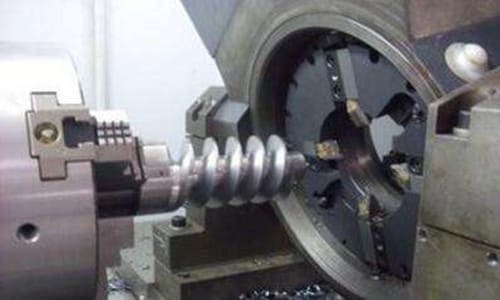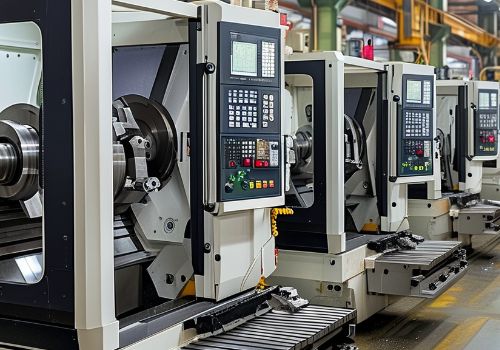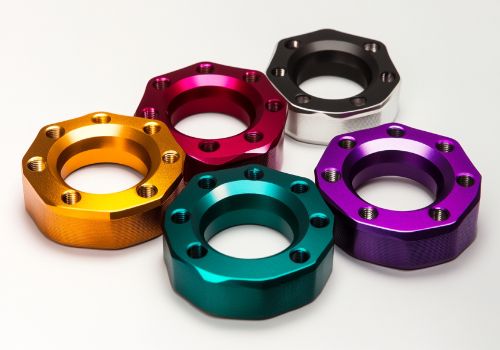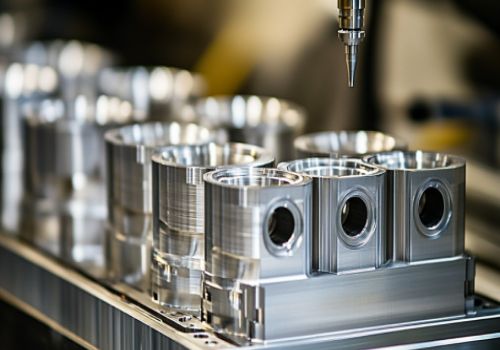Thread machining is the process of machining threads on workpieces by cutting, turning, milling, grinding and other processes, and generally refers to the method of machining threads on workpieces with forming tools or abrasive tools. There are a variety of tools for machining threads. The choice of tools is actually the choice of machining method.
Let’s take a detailed look at various machining methods characteristics. In actual production, we can analyze which tool to use for machining from a technical and economic perspective according to the characteristics of these machining methods.
1. Thread turning
For turning threads on a lathe, a forming turning tool or a thread chaser can be used. Due to the simple structure of the tool, the forming turning tool turning thread is often used for the machining of single-piece and small batch production threaded workpieces. Turning thread with a thread chaser tool has high production efficiency, but the tool structure is complex, and it is only suitable for medium and large-scale production of short-threaded workpieces that turn fine teeth.
2. Thread milling
Use a disc cutter or comb cutter to milling thread on the milling machine. Disc cutters are mainly used for milling trapezoidal external threads on screw, worm and other workpieces. Comb cutters are used for milling internal and external common threads and tapered threads. The pitch accuracy of thread milling can generally reach 8-9 grades, and the surface roughness is R5-0.63 microns. This method is suitable for mass production of threaded workpieces of general accuracy or roughing before grinding.
3. Thread grinding
It is mainly used for machining precision threads of hardened workpieces on thread grinding machines. There are two types of single-line grinding wheels and multi-line grinding wheels according to the shape of the grinding wheel. The thread pitch accuracy that can be achieved by single-line grinding is 5 to 6 grades, and the surface roughness is R1.25 to 0.08 microns. This method is suitable for grinding precision screws, thread gauges, worms, small batches of threaded workpieces, and shovel grinding precision hobs.
There are two types of multi-line grinding wheels: longitudinal grinding and plunge grinding. The width of the grinding wheel in the longitudinal grinding method is smaller than the length of the thread to be ground, and the grinding wheel can be ground to the final size by moving one or several strokes in the longitudinal direction. The width of the grinding wheel of the plunge grinding method is larger than the length of the thread to be ground. The grinding wheel is cut into the surface of the workpiece radially. The workpiece can be ground by about 1.25 revolutions. The productivity is higher, but the accuracy is slightly lower. The plunge grinding method is suitable for shovel grinding large taps and grinding certain fastening threads.
4. Tapping and die-head threading
Tapping is to use a certain torque to screw the tap into the pre-drilled bottom hole on the workpiece to process the internal thread.
The die-head threading is to cut the external thread on the bar (or tube) workpiece with a die.
The accuracy of tapping or die-head threading depends on the accuracy of the tap or die. Although there are many methods for machining internal and external threads, small diameter internal threads can only be machined by taps. Tapping and die-head threading can be performed manually, as well as lathes, drilling machines, tapping machines and die-head threading machines.
5. Thread rolling
It is a machining method that uses a forming rolling die to plastically deform the workpiece to obtain threads. Thread rolling is generally carried out on a thread rolling machine, which is suitable for mass production of external threads of standard fasteners and other threaded couplings. Rolling generally cannot process internal threads, but for softer workpieces, grooveless extrusion taps can be used to cold-extrude internal threads. The working principle is similar to tapping. The required torque when cold extruding the internal thread is about twice that of tapping, and the machining accuracy and surface quality are slightly higher than that of tapping.
As a professional CNC machining manufacturer, DO Machining not only produce metal parts, but plastic and wood parts are also available.
Please visit what MATERIALS and what SURFACE FINISHES we can offer.
CNC machining service is the core business of DO Machining, from protptyes to bulk production, our professional 3/4/5 aixs CNC machining centers, CNC turning equipments, CNC turning-milling equipments, CNC grinding machines etc., are operated by well trained manufacturing engineers to meet the demands from global 1000+ customers in 30+ industries.
CNC Machining can be done starting with blanks produced from standard bar stock or one of DO Machining other manufacturing processes.
Contact us to see how we can provide overall value to your CNC machining needs.










